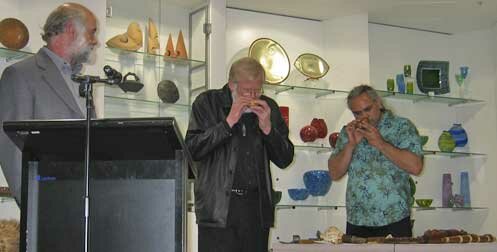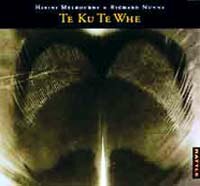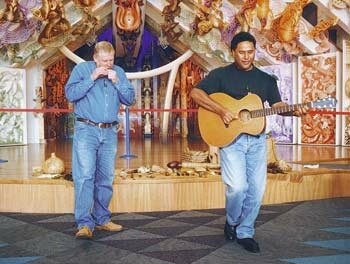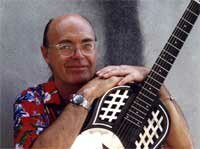Richard Nunns, biography
2012, Finalist, Vodafone NZ Music Awards
Te More (Whirimako Black and Richard Nunns) is a finalist in the Best Maori Album category of the 2012 Vodafone New Zealand Music Awards
2012, Lifetime Contribution to Maori Music Award
Dr Richard Nunns and the late Dr Hirini Melbourne: were joint recipients of the Lifetime Contribution to Maori Music Award
2011
This has been another full year for Richard with many performances and presentations nationally and internationally.
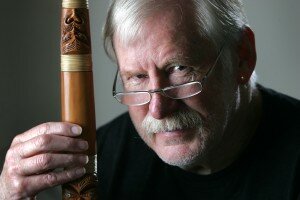 New Zealand in 2011
New Zealand in 2011
In New Zealand, he has performed in:
- The Adam Chamber Music Festival;
- Opera in the Park, Nelson;
- Festival of Colour, Wanaka;
- the Don McGlashan work performed for the opening of the Rugby World Cup;
- The Christchurch Festival and
- the Four iiii’s festival in Wellington.
Te More
With the newly formed Nga Tae (comprising Richard’s dream team of Paddy Free — keyboard and electronica, Waimihi Hotere, vocals and his protege Horomona Horo also on Taonga Puoro) he has performed at –
- Te Horo,
- in Ihimaera in the Auckland Festival;
- 3 sets at WOMAD NZ,
- Bluesfest, Byron Bay Australia and
- The Maori Music Awards in Hastings.
This group have just been workshopping and recording material for their first CD due out in March.
Internationally in 2011
Internationally, Richard has
- toured with NZSQ to Hobart and Launceston in March and in the June /July period,
- Richard had an extended tour to Europe where
- he performed and recorded another CD with Yggdrasil in the Faroe Islands,
- visited Iceland for the first time and gave presentations there;
- returned to Germany, Italy and Turkey for performing and recording, and
- completed the tour with performances with the NZSQ and NZ Trio in the City of London Festival.
- In August Richard travelled to Patagonia with Waimihi Hotere on the final leg of Latitude 35 degrees project.
- This was closely followed by a two-week trip to Sri Lanka with saxophonist Reuben Derrick.
Other work in 2011
In between times he has been recording for various CDs, contributing to a range of conferences, mentoring younger Maori artists and filming for a documentary on his “story”.
This has been a huge year for CDs and CD releases
The NZSQ CD Notes from a Journey, which includes He Poroporoaki composed by Gareth Farr and Richard Nunns, won the Best Classical Album in the New Zealand Music Awards. Releases have included
- Te More, Whirimako Black and Richard Nunns;
- Ancient Astronaut Theory, Dave Lisik and Richard Nunns;
- This Appearing World, Crispell, Nunns, Henderson.
- Richard also features on Seven by Tim Hopkins.
Awards
In November Richard was awarded The Constance Scott Kirkcaldie Award for Outstanding Composer of Music in The Chapman Tripp Awards for his work in the Capital E production of
2011
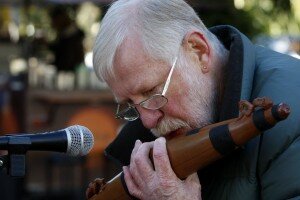 Richard as had one of his busiest year’s yet, including 5 major international tours, and virtually continuous work In New Zealand. See his biography. All the while managing Parkinson’s disease.
Richard as had one of his busiest year’s yet, including 5 major international tours, and virtually continuous work In New Zealand. See his biography. All the while managing Parkinson’s disease.
“With respect to my wobbles, I’m in pretty good health right now, what I am doing is holding the Parkinson’s at a plateau. I’m still doing the business around the world in front of thousands.”
“The business” is simple. Traditional Maori instruments are being used as cultural markers all around us, with fragments of it on television screens and radiowaves, and in performances with a wide range of musicians nationally and internationally.
“They are the soundscape of New Zealand, now. People think they won’t know them but they do. They are sounds that could only have come from Aotearoa. They are the markers of knowing New Zealand, of knowing our language.
One of the highlights for 2011occurred while in Patagonia to work on the Latitude 35 South project Richard had a rather extraordinary musical encounter with whales.
“They go to this one particular spot to have their babies. Just over 200 metres from shore there were around 70 to 90 of them. There were so many of them, after a while, rather facetiously it got boring. We were out there, looking at the whales and I decided to play some of the instruments. The whales were lying motionless and then I played the bone flute and four huge whales rose up and started looking at me. It was pretty amazing.”
Forthcoming in 2012 will be a return trip to London with the NZSQ in March when they will perform at Kings Place. Following this he will participate in a New Zealand contribution to the Music Scene in Los Angeles. On the local scene, he will be performing with Nga Tae at Sounds Aotearoa in New Plymouth in March, and the Erupt Lake Taupo Festival in May.
In 2010
This year, Richard has travelled to South Africa with Phil Dadson as part of Latitude 35 degrees project, and performed in several centres.. He performed with Whirimako Black their new programme Te More at Sounds Aotearoa, and is currently composing a major new project.
Richard’s story
Richard has a long history of personal commitment to researching and presenting/ performing the traditional musical instruments of the Maori, and to organising this body of knowledge into a form which is immediately understandable to people in general, particularly Maori who have lost contact with such knowledge.
As well as his ethno-musicological expertise, since Richard first began public performances on taonga puoro (Maori musical instruments), he has developed an amazing international profile, both with the diversity of his r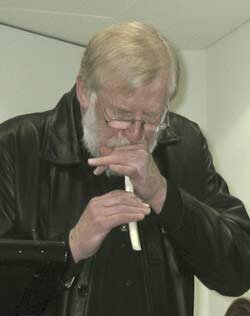 ecorded work, along with performing with a wide variety of people in many differing settings and circumstances.
ecorded work, along with performing with a wide variety of people in many differing settings and circumstances.
Richard works across a wide range of musical genres.
He has toured with Maori artists,
- Moana Maniapoto
- Deborah Wai Kapohe
free jazz improvisors,
- Evan Parker
- Jeff Henderson
pianists,
- Judy Bailey
- Marilyn Crispell
- Paul Grabowsky
- Mike Nock
flutists,
- Alexa Still
- Bridget Douglas.
- Ingrid Culliford
Richard has had a number of performances of contemporary classical works, written specifically for him and his instruments, including performances with
- New Zealand Symphony Orchestra
- New Zealand String Quartet.
One of the most recent of these was Puhake ki te Rangi(Spouting to the skies) composed for Richard and the New Zealand String Quartet by Gillian Whitehead while she was composer-in-residence at the Lilburn House in Wellington.
More recently Richard has been working in the electronica field with Paddy Free of Pitch Black, and has performed with the Australian Art Orchestra.
His improvisation work is truly cross cultural and has seen him performing with Performers from Iran, Australian Aboriginal, First Nation America, Korea, Bolivia China, Turkey, Germany, Finland, Scotland – a global impact.
He is continually in demand for recording with a wide range of musicians.
Michael Cooper talks to Richard Nunns
In front of me was a bookcase lined with the complete works of Samuel Beckett, some rare editions, placed above the complete recorded works of John Coltrane. Richard is a Pakeha or New Zealander of European descent, in his case Scandinavian, and yet he has been deemed and marked with a moko (tattoo) as a custodian of Maori culture.
“Yes, and that is a huge and scary responsibility in many ways, and they have ways of marking you. Often I will have older people come to me and say ‘You will do this for the rest of your life’ — not a question but a command!
“You get taken up the coast and marked with a moko of the tuhonohono type. This two inch wide band around my upper arm. The teeth like pattern in the middle represents the ‘niho taniwha’ or teeth of the monster. In symbolic terms the ‘taniwha’ protected and guarded as well as ran riot.
“Generally the weaving pattern is regarded as a symbol of guardianship or protection and the opposition of the two sets of teeth, the gap or pathway through them, becomes ‘te ara puoro’ the pathway of music or sound. So it is the guardianship of music. It is a non-tribal tattoo, I’m not entitled to tribal markings. There is also a lot of this cross hatching (in tattooing) in Viking culture, which is my background. Same journey different route. The metaphor is always a journey, both public and private and I feel very privileged on a huge variety of levels.”
The pattern of his moko is also considered to be a representation of the barb of a stingray tail. Some weeks after being given his tattoo Richard was in the ocean, walking close to the shore, when he stepped on a basking stingray which left him a scar on his leg with its barbed tail.
Much has changed in Richard’s life since I originally interviewed him. Back then he was a teacher of English language and literature at Nelson College for Girls from nine till nine. A lifelong career, or so he thought, until in his fifties he suddenly gave it up to pursue the music journey full time. Charged with returning any knowledge they were given access to back into the community Richard and Hirini travelled around giving workshops and concerts. From those particular situations they made no money.
“As far as Te Ku Te Whe goes,…it’s sold quite a few thousand copies and any artist selling more than 500 copies of anything in New Zealand is big time!! So it’s nothing short of amazing and it just keeps rolling on, neither in nor out of fashion. I have little shame in talking about it because we don’t take any money out of it. The royalties get put into a trust fund at the moment, ultimately to build an endowment at Waikato University for post graduate study into traditional music.
“Most of this knowledge that we have comes from the fragmented memories of very old women. There are, at the workshops, always young and old, right across the board. Our most comfortable place is always on the marae (a Maori meeting or gathering house) held in the arms of a traditional house in a traditional community where the traditional process can take place. It will then have its own time and it is usually, although not always exclusively, extended family taking part and you seed the knowledge. If we are doing anything at all it is simply alerting people to the fact that there is this extraordinary music that is here, belongs here and speaks of here in a most eloquent way.
“When I play with Moana and The Moa Hunters she plays to audiences of between 10-14,000 people at times. So the instruments are out there in front of a lot of young disaffected Maori who have got their hats on backwards going ‘Yeoow man!’ and the whole black American cultural attitude. Whereas they have this extraordinarily rich culture here, and groups like Moana and The Moa Hunters are finding ways of taking that and placing it in a contemporary context that is entirely legitimate.
hugely steep. Not about learning to play the instruments, that’s a far more internal, organic thing that comes to me far more easily than, for instance, a notion that is held very high within the Maori community called ‘whakaiti’ or to make yourself humble; you do not stand up above the crowd, you do not poke your head up above others and they have extraordinary ways of levelling you back again if you do. If you want to learn about Maori things you do not ask. You go around the back and get invited in. You can semi-invite yourself by working in the kitchen, for instance, peeling potatoes. You don’t go around to the front and no matter how sensitive or how interested you might be they actually have no reason to give you any information at all. They have had 150 years of absolutely being screwed over by a colonial juggernaught and it’s still rolling, but they are rising out of that and it’s, as always, awkward and prickly, but thing are happening. There is a dynamic dialogue going on.
“I sometimes g et challenged. There is now, of course, a new generation of young ones who don’t know the genealogy of who started this whole revival. Essentially myself, Hirini Melbourne and Brian Flintoff, the instrument maker. They just want to know ‘Hey, what’s this Pakeha doing with our instruments?’ But you leave it to others to explain what’s going on and often no amount of talk will explain anything anyway, so I just trust to what I can do with the instruments. That inevitably turns things around within a matter of seconds. They recognise that (for whatever reason, and I use the words very carefully) that I have been ‘gifted’ with a tradition and I am a conduit, a medium or a funnel. I can’t explain it myself, but that’s the way it is.
et challenged. There is now, of course, a new generation of young ones who don’t know the genealogy of who started this whole revival. Essentially myself, Hirini Melbourne and Brian Flintoff, the instrument maker. They just want to know ‘Hey, what’s this Pakeha doing with our instruments?’ But you leave it to others to explain what’s going on and often no amount of talk will explain anything anyway, so I just trust to what I can do with the instruments. That inevitably turns things around within a matter of seconds. They recognise that (for whatever reason, and I use the words very carefully) that I have been ‘gifted’ with a tradition and I am a conduit, a medium or a funnel. I can’t explain it myself, but that’s the way it is.
How did this happen? “You can live within and amidst another culture, anywhere in the world, and yet make no contact whatsoever. Parallel lines with no interconnection in any way. It wasn’t until my late twenties, when I was teaching at Waikato, that I became involved in the building of a marae (meeting house). Building the marae put me in touch with the Maori community. It led to what might be called a Marxist consciousness raising, or whatever you like. Over the period of a year building this marae I began to realise that there was another way of living in this country that I knew nothing about and which I found quite attractive. I asked some questions about traditional instruments, to which there was no response. Direct questioning within the culture is not productive and fortunately I knew enough not to pursue it.
“Moving down here to Nelson I became involved with bone carver Brian Flintoff, who was also very keen on making functional items and we slowly got our heads together. As well as the person to make them we are very blessed at the top end of the island here with the materials we need to make the instruments. There is a river outside the window there which provides us with greenstone jade, plus the bush up there where we get all the bindings we need plus some of the wood. Our relationship with the Department of Conservation is such that we get can get permits for bird bone, whale bone and teeth, seal skins, all that kind of thing. Our credentials are well established. There is no ‘take’ of endangered species, it is only when one is found or killed that it gets apportioned and it seems to have a way of coming when we need it.
“Added to the whole musical childhood and things with brass bands and my father, who was into big band music and a very good trumpet player and performer, it has become a relationship which continues very purposefully today. He is the design engineer and I’m the test pilot. Brian is not a musician but he has created some 90 instruments for me.
“About two years after we met we then met Hirini Melbourne who was thinking similar things about traditional instruments himself. The three of us have been working for over 25 years, travelling widely, researching, playing, taking knowledge back to people, back to roots, teaching and very successfully re-kindling interest in something which has been hidden for over 100 years.”
“There are other makers now, a whole second generation, but they are very difficult instruments to play. You have to dredge from within you virtually eighty percent of the voice, sound and music from a little cylinder with three finger holes. It doesn’t automatically give you very much at all. You are literally dredging for music – a lifetimes work! “
In 2009
Auckland Festival 2009
Blood and Stone with Phil Dadson
Taonga: Dust, water, wind performing with Atamira Dance Collective
USA
In March and April this year Richard toured with the NZSQ to the USA.
Premiered North: South
With poet Glenn Colquhoun and Celtic musician Bob Bickerton at Going West Festival. Also presented at the Nelson Festival.
China
In November Richard goes to China as a performer in the New Zealand delegation to the Beijing Central Conservatory of Music. This year their festival is NZ and Pacific based.
In 2008
Feel the seasons change
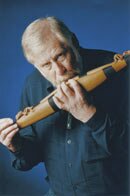 New Zealand Symphony Orchestra with Salmonella Dub, Whirimako Black, Richard Nunns and Paddy Free, February Tour
New Zealand Symphony Orchestra with Salmonella Dub, Whirimako Black, Richard Nunns and Paddy Free, February Tour
Green Fire Islands Music Tour
An extensive tour collaboration between Maori and Irish musicians in February and March
Gallipoli, Anzac day 2008
Richard and Gareth Farr composed and performed in Gallipoli 2008, as part of the 10-composer series culminating in 2015.
Europe and UK
Richard continued to Italy and the Faroe Islands after Gallipoli, returning to perform in the Taupo Festival in New Zealand in May.
October and November saw Richard back for an extensive tour of both Europe and the UK including performances with the New Zealand String Quartet in Edinburgh.
